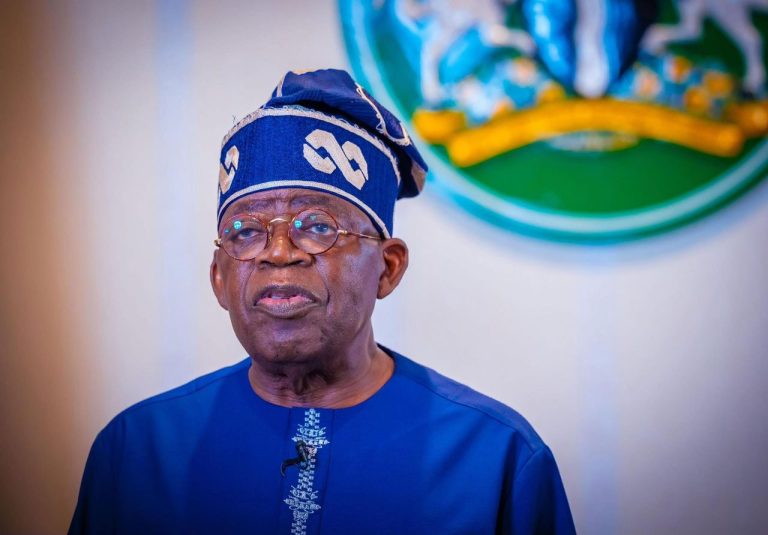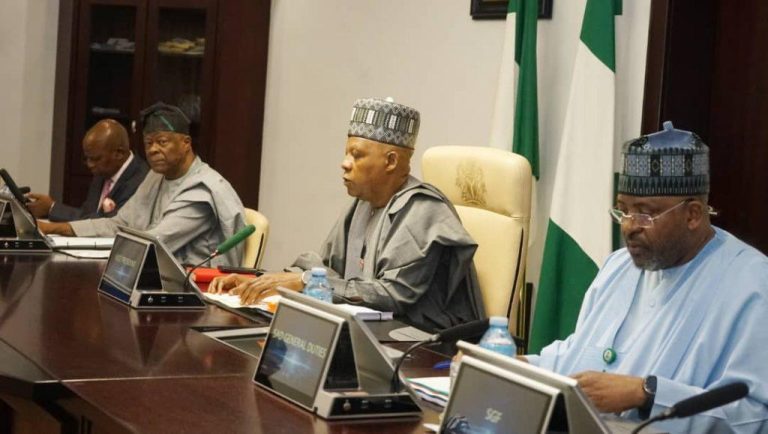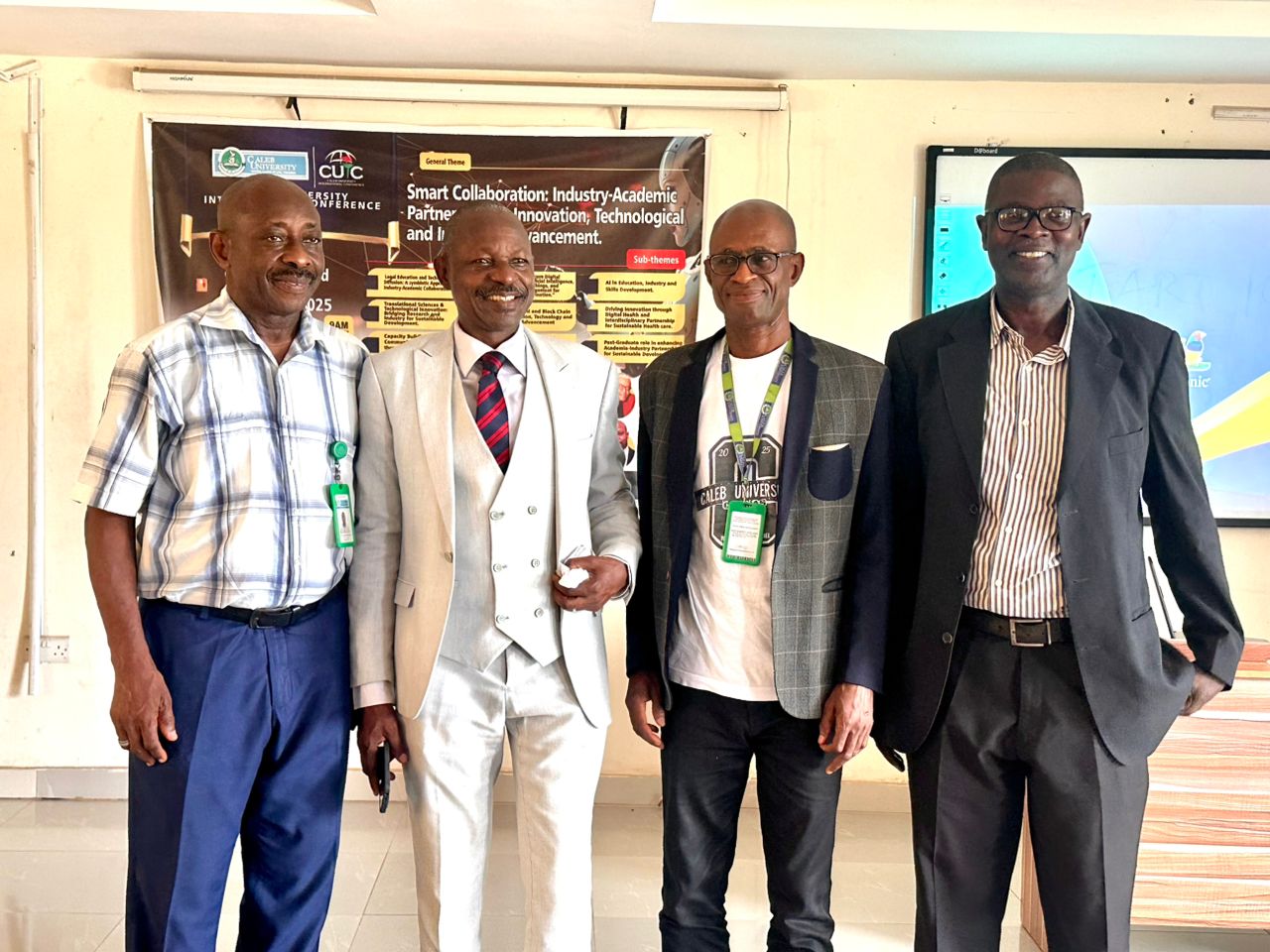
Professor Olatunji, President of ACSPN, @ Caleb University
The Nigerian government has been urges to strengthen institutional frameworks supporting university–industry partnerships, while industries should invest in academic research and innovation.
Professor Olatunji President Association of Communication Scholars and Practitioners of Nigeria , ACSPN made this known while delivering a lecture titled “Enhancing Capacity Building in Communication and Media through Academic–Industry–Government Partnerships in Nigeria: A Triple Helix Approach” at the 2025 International Conference of Caleb University, Imota, Lagos.
According to a statement by the Secretary General of ACSPN, Dr Solomom Oyeleye , the International Conference, themed “Smart Collaboration: Industry–Academic Partnership for Innovation, Technological and Industrial Advancement,” provided a platform for experts to deliberate on how effective partnerships can drive innovation and knowledge-based development in Nigeria.
The Triple Helix Model
Drawing from the Triple Helix Model, which integrates universities, industries, and government agencies in a collaborative innovation system, Olatunji explained that such synergy fosters shared expertise, curriculum co-design, research collaboration, and experiential learning.
He stressed that capacity development in communication must move beyond traditional classroom teaching to include practical engagement, policy-driven research, and technology-enabled storytelling.
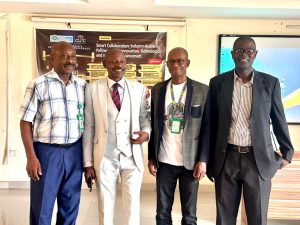
He emphasised that through research, collaboration, and innovation, ACSPN continues to shape a resilient and future-ready communication and media ecosystem for national transformation.
True Innovation In The Media
“True innovation in media,” he remarked, “is not just about novelty but about creating value and impact through transformation.” Highlighting practical examples, he outlined how the Triple Helix model has been applied in Nigeria’s communication sector through initiatives such as curriculum co-design, internships, innovation hubs, and research partnerships.
He cited ongoing collaborations facilitated by ACSPN with organisations like the Centre for Journalism Innovation and Development (CJID), Dataphyte, and, the Ford Foundation, UNICEF, UNESCO, McArthur Foundation and government agencies that have resulted into jointly implemented research projects, fellowships, digital media training, and innovation incubation programmes across universities.
These efforts, he said, exemplify how targeted partnerships can transform research into practical outcomes for the media industry.
He said, “Between November 2024 and now, the CJID has partnered with the ACSPN to train nearly 100 scholars and professionals in the emerging area of mainstreaming AI into academic and professional practices in Communication and Media in Nigeria”, adding that this project is a continuous one.
Since its establishment, ACSPN has pursued its mission of advancing excellence in communication research and practice through a series of capacity-building initiatives, including the Empowerment Series, Eminent Persons’ Strategy Series, Value-Added Conferences, and Mentorship Programmes.
According to him, these initiatives have yielded measurable results, improving research productivity, professional competence, and youth engagement in communication and media practice across the country.
The Unbundling of Mass Communication Course
A case in point, according to the President of the ACSPN, who is also a Professor of Public Relations and Advertising at the Lagos State University, is the successful unbundling of the erstwhile B. Sc. Mass Communication degree programme into eight (8) distinct degrees in different areas of Communication and Media.
Going down the memory lane, Professor Olatunji recalled that the in Nigeria, the ACSPN took the first step towards the review and unbundling of the Mass Communication curriculum, with a grant the Association secured from UNICEF.
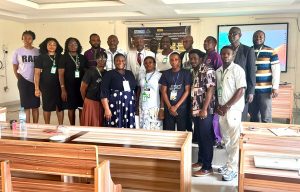
The first of such meetings was organized by the ACSPN at the University of Lagos, where the Nigerian Press Council, Nigerian broadcasting Commission, Advertising Practitioners’ Council of Nigeria (APCON) as it was then called), Nigerian Institute of Public Relations (NIPR), media and professionals organisations as well as academia.
The trend continued with the support received through the Funding grants received from McArthur by Professor Umaru Pate, then of the Bayero University, Kano, and eventually the immediate past-President of the ACSPN.
A substantial part of the McArthur Foundation grant was deployed by Professor Pate to midwife the Mass Communication curriculum unbundling project, rallying critical stakeholders in fashioning eight (8) distinct degrees in all areas of Communication and Media, and finally adopted by the National Universities Commission (NUC).
The ACSPN boss highlighted association’s long-standing partnerships with UNESCO, the Ford Foundation, and other development partners, which have resulted in significant outputs such as the UNESCO-supported training brochure on preventing fake news and promoting media and information literacy.
Through such collaborations, ACSPN has emerged as a leading voice in evidence-based media research, policy advocacy, and innovation in Nigeria and Africa.
https://www.acspn.com.ng/about-us/our-profile/
These achievements, he said, reflect the tangible impact of collaborative investment in human capital and institutional development.
Despite these accomplishments, Olatunji acknowledged persistent challenges such as inadequate funding, weak research infrastructure, limited access to emerging technologies, and a mismatch between academic output and industry needs.
He emphasised that overcoming these obstacles requires continuous dialogue and collaboration among universities, media organisations, and government bodies, anchored on trust, transparency, and a shared vision for national development.
The lecture, which aligned with the core theme of Caleb University’s international conference, reinforced the importance of smart collaboration as a driver of innovation and technological advancement.
In his concluding remarks, he called for robust policy reforms that recognise communication and media as strategic pillars of national development and economic growth.
He also encouraged communication scholars and practitioners to embrace continuous learning, leveraging emerging technologies such as artificial intelligence, virtual reality, and data-driven journalism to stay relevant in an evolving media environment.
Participants commended the lecture for its intellectual depth and practical relevance who described it as a timely and visionary contribution to Nigeria’s pursuit of a knowledge-driven society.
The Sustainability Imperative in Media Development


